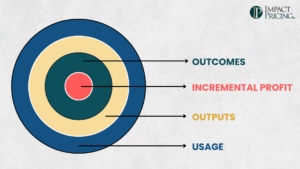You can listen to the full audio version of this blog we call — Blogcast.
Price segmentation is one of the most important and potentially powerful aspects of pricing. It simply means charge different prices for essentially the same thing to different customers based on their willingness to pay. This week, I saw an article describing a fascinating technique. Let’s learn from it.
In an article published by Fodors Travel about research done by NordVPN, they found different prices for hotels, rental cars, theme parks, and more based on where you purchased from. It turns out, buyers from the US tend to pay more for European travel than buyers in Europe.
Good price segmentation requires two aspects: a difference in willingness to pay and fencing. Let’s look at these one at a time.
First, American travelers who are already paying for air travel to Europe have demonstrated they have some willingness to pay, likely higher than most Europeans. Similarly, Europeans can choose to travel to a city or a hotel on much shorter notice. They have more information about what’s available. They are undoubtedly more price-sensitive. I didn’t see the study, but it wouldn’t surprise me if the opposite is also true: travel in the US is probably more expensive for Europeans.
There are many examples where “locals” get better prices than visitors. I live in Reno, NV. The restaurants at casinos offer discounts to residents, which people from out of town don’t get. Florida residents get into Disney World cheaper than I can. I’ve heard Indian citizens get into the Taj Mahal at dramatically lower prices than visitors from out of the country.
The second part of price segmentation is the fencing. You need some way to give a lower price to the price-sensitive buyer while getting a higher price from the buyer with a higher willingness to pay. In this Fodors Travel example, merchants look at the IP address of the computer being used to book travel. They can tell if you’re in Reno or Edinburgh. They only show you one price, and you don’t know lower prices could be available.
Sometimes, you know a seller is using price segmentation, and sometimes, you don’t. The Fodors Travel article is interesting because I didn’t know this was happening until I read the piece.
Obviously, NordVPN did this research in hopes that more Americans would subscribe to their VPN service. You can sit in Palo Alto and pretend to be in Edinburgh while shopping for your European travel. NordVPN wants you to know there are ways to trick these systems.
This leads us to another lesson. Paying for and using a VPN to find lower prices demonstrates price sensitivity. There is nothing wrong with this. It is similar to people who are willing to invest the time and effort to use coupons. In both cases, the buyers jump a hurdle to prove they are price-sensitive.
Price segmentation is fun. It’s fun to look for unique examples, and it’s especially fun to count the extra revenue when you do segmentation well. Good luck! Let me know if you’d like some help.
Share your comments on the LinkedIn post.
Now, go make an impact!
 Tags: price, price segmentation, price sensitivity, pricing, willingness to pay
Tags: price, price segmentation, price sensitivity, pricing, willingness to pay













